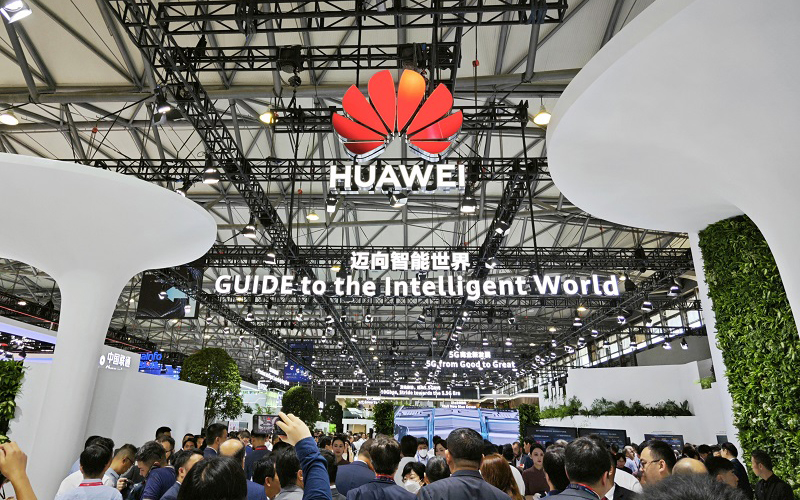Next-Level 5G: The Maturation of 5G Standalone (SA)
When 5G was first launched in 2019, it was touted as being the next big thing in technology, promising to revolutionize the way we live and work. Since then, the number of 5G users has surged to one billion, becoming the fastest-growing mobile communications technology globally.
However, while 5G Non-standalone (NSA) has been widely adopted for enhanced smartphone experiences, many have felt disappointed with its limited impact. But there is hope on the horizon: 5G Standalone (SA) architecture is poised to deliver on the initial hype by enabling new, innovative services that can be monetized for revenue growth. With 5G SA, the true transformative power of 5G can finally be realized.
After years of development, the 5G SA ecosystem has reached maturity and is positioned for rapid, large-scale global deployment. This has garnered global attention as telecom operators recognize its potential in developing user bases and both B2C and B2B services. With 43 operators already commercially deploying 5G SA networks and 115 planning their deployment, as well as the number of 5G SA networks around the world increasing by 48% in the past half year, it is evident an explosive growth of 5G SA networks is just around the corner.
After years of development, the 5G SA ecosystem has reached maturity and is positioned for rapid, large-scale global deployment.
Fruitful roundtable discussions

A 5G SA industry development roundtable was convened at this year’s annual MWC Shanghai event, Asia’s most influential event for the telecom industry where trailblazers share their latest insights.
During the roundtable — which was moderated by David Bruce Morrison, Director of Huawei CNBG Chief Transformation Office — participants shared valuable thoughts on the benefits and challenges associated with 5G SA. Ultimately the consensus is clear: 5G SA offers unique advantages and holds immense potential for revolutionizing connectivity. The discussion yielded several key points:
- Analysts at the roundtable revealed that most global operators consider 5G SA as the development target. Some operators have already deployed 5G SA, while others plan to do so within the next two years.
- All participants agreed that a fully-converged 5G Core (5GC) is the optimal choice when it comes to developing 5G SA.
- Half of the guests attributed the main value of 5G SA to providing better service experience and new services. They also viewed it as an opportunity to increase the average revenue per user (ARPU) and data traffic per user per month (DOU) and offer investment cost advantages.
- On the other hand, half of the participants still viewed technical challenges such as charging, coverage, and handover as the biggest obstacles to 5G SA construction. Some also believed the industry chain to be immature, particularly when it comes to terminals, and that there was insufficient business driving force.
- On the key issues of 5G SA core construction, half the participants focused on ensuring interoperability between SA and 4G/NSA and reconstructing the charging system. They believed that this approach would help ensure security, efficiency, and simplicity.
The next mainstream network
The roundtable showed that 5G SA has clearly emerged as the target network architecture, offering operational value and reduced investment costs. The consensus stems from the realization that 5G SA offers unique advantages, including improved service experiences and the ability to introduce new services. Several experts elaborated on their ideas and spoke of their own experiences of 5G SA thus far.
Maximizing ROI with fully convergent 5G SA core networks
Feng Zheng, Group-Level Chief Expert at China Mobile, spoke about the company’s experience in 5G SA core network construction and development. He emphasized that a fully convergent 5G SA network is the optimal choice for maximizing ROI. Traditionally, radio access networks (RANs) and core networks operated independently, resulting in inefficient standards development and heavy investments in 4G networks. However, 5G SA networking eliminates these shortcomings by providing simplified networking, efficient O&M, and enhanced user experience.
- Simplified networking: With a fully convergent core network, a single virtual network function (VNF) can process services for users in different radio access modes, reducing complexity and avoiding redundant resource allocation. This approach streamlines the network architecture and minimizes the number of interfaces and network elements, resulting in a more efficient system.
- Efficient O&M: By maintaining a single convergent core network, operators can significantly reduce O&M workload and enhance operational efficiency. The consolidation of core networks simplifies the management and maintenance processes, enabling operators to allocate resources more effectively and improve overall network performance.
- Enhanced User Experience: 5G SA offers users an improved experience through several mechanisms. VoNR provides better voice quality as well as a fully immersive and interactive calling experience by adopting the Enhanced Voice Services (EVS) codec. Signaling between different generations of VNFs is now also processed within the same network function, reducing interoperability complexity and latency. Furthermore, NWDAF based differentiated service management allows operators to launch packages for different levels of service flow assurance, increase the ARPU, stimulate network traffic, and accelerate experience monetization.
Driving growth through increased 5G SA users and new services
Xu Xia, the 3GPP SA1 Vice Chairman and Standard Director at the China Telecom Research Institute, highlighted the pivotal role of the core network in driving the rapid growth of 5G SA users.
“5G SA can bring significant growth opportunities to both DOU and ARPU, and the core network is the key to driving the rapid expansion of the 5G SA user base. New trends such as immersive experience, intelligence, and ubiquitous connectivity are booming for 5G applications, bringing about the need for a 5G-Advanced Core. China Telecom has carried out extensive research on 5G-Advanced/6G air-ground integration, helping promote the sustainable development of the 5G-Advanced/6G industry.”
Xu Xia, 3GPP SA1 Vice Chairman and Standard Director at China Telecom Research Institute
China Telecom‘s successful experience in 5G SA buildouts demonstrates the significant growth opportunities presented by 5G SA services. Leveraging the high bandwidth and low latency of 5G SA, operators can boost their ARPU and expand their offerings, particularly in the 5GtoC and 5GtoB sectors.
Leveraging the high bandwidth and low latency of 5G SA, operators can boost their ARPU and expand their offerings, particularly in the 5GtoC and 5GtoB sectors.
To increase 5G SA users, operators need to identify multi-mode terminals, formulate appropriate policies, and launch attractive 5G SA packages. This strategy, coupled with delivering high-quality service experiences, promotes the adoption of 5G SA multi-mode terminals, stimulating the growth of SA networks and driving increased ROI.

In terms of new services, operators must focus on cultivating users’ service usage habits and offer attractive service packages. Collaborating with service providers, operators can improve user experience, accelerate the development of innovative services, and create a mutually beneficial industry ecosystem. Successful cases from China Mobile and China Telecom demonstrate how 5G SA has facilitated revenue growth and spearheaded social and economic development.
Maturity of the 5G SA industry ecosystem and global deployment
Felix Qiu, President of Huawei Packet Core Network Product Line, emphasized the maturity of the 5G SA industry ecosystem. With the establishment of 5G SA network standards and the availability of 5G SA-compatible terminals, the global industry has witnessed a surge in commercial deployments of 5G SA networks.
“The 5G SA industry ecosystem has reached maturity, with large-scale commercial deployments widespread. Today, more than 80% of 5G terminals support 5G SA, and a rich array of 5G SA practices have been carried out all over the world. All of these have contributed to a growth of DOU and profits in both the B2B and B2C sectors.”
Felix Qiu, President, Packet Core Network Product Line, Huawei
These deployments have been accompanied by a wide range of successful practices worldwide, with notable examples from China, Southeast Asia, the Middle East, and Latin America. They serve as a testament to the potential of this technology.
Guang Yang, Senior Principal Analyst at Omdia, also spoke of the positive future of 5G SA, highlighting how he firmly believes it will soon become mainstream and how some terminals are already URSP-capable.
“5G Core is an essential driver behind 5G development, vital to the implementation of key technologies and applications, such as those related to network slicing and ultra-low latency,” said Yang. “With accelerating commercial deployment of 5G SA networks globally, 5G coverage and terminals are continuously optimized. Featuring high bandwidth, low latency, and high reliability, 5G SA will become the mainstream in the 5G era.”
Guang Yang, Senior Principal Analyst, Omdia
Sean Zeng, Vice President of Huawei Packet Core Network Product Line, underscored the readiness of 5G SA networks for global deployment as well as its inherent capabilities. These position 5G SA as the new growth engine for operators.
“5G SA is ready for large-scale commercial use. Featuring ultimate user experience, differentiated SLAs, and energy saving, SA networks will become a new engine for operators’ growth in the future. To help operators quickly deploy 5G SA networks, Huawei offers a fully convergent 5G Core solution, and provides a precise user migration solution to quickly attract more users for faster development.”
Sean Zeng, Vice President of Huawei Packet Core Network Product Line
Navigating challenges and creating opportunities
While the industry experts discussed the benefits and potential of 5G SA networks, it is important to acknowledge the challenges and concerns that were raised by some participants of the roundtable. These concerns highlight the need for collaborative efforts and ongoing innovation to address potential obstacles.
- Terminal compatibility and upgrade requirements: Some terminals may require software upgrades or SIM card replacements to support 5G SA. This can pose challenges for both operators and users, as it may require additional investments and efforts to ensure widespread compatibility. However, it is worth noting that ongoing collaboration and technological advancements are working towards minimizing such barriers and streamlining the adoption process.
- Industry-wide collaboration: Industry-wide collaboration is vital to achieving a uniform and consistent 5G SA experience across different regions. As the implementation of 5G SA networks expands globally, it is crucial for operators, vendors, standards organizations, and regulatory bodies to work together to ensure seamless interoperability and standardized practices. By fostering collaboration, the industry can address potential compatibility issues and drive the widespread adoption of 5G SA technology.
- Deployment challenges: Emanuel Kolta, Lead Analyst on Network Sustainability and Innovation at GSMA Intelligence, pointed out that some operators face challenges in deploying 5G SA networks due to various factors such as different stages of development or budget constraints. However, it is important to view these challenges as temporary roadblocks rather than insurmountable obstacles. As the industry continues to mature and technologies evolve, these challenges can be gradually overcome, opening up significant opportunities for 5G SA network deployment.
Prime for deployment
Even though challenges exist, it is important to recognize that the industry is actively addressing them through collaboration, research, and innovation, and to view them as opportunities for growth. Huawei, as a key player in the industry, reiterated its commitment to collaborating with industry partners to navigate the challenges associated with 5G SA development. With the technology already proven in large-scale commercial use, supported by a mature industry chain ecosystem, and bolstered by successful cases from companies like China Mobile and China Telecom, 5G SA is ready for global deployment.
As the 5G SA industry ecosystem continues to mature, it is expected that challenges will be mitigated, enabling operators to reap the full benefits of 5G SA networks.
Learn more about Huawei’s 5G solutions
Disclaimer: Any views and/or opinions expressed in this post by individual authors or contributors are their personal views and/or opinions and do not necessarily reflect the views and/or opinions of Huawei Technologies.
Leave a Comment